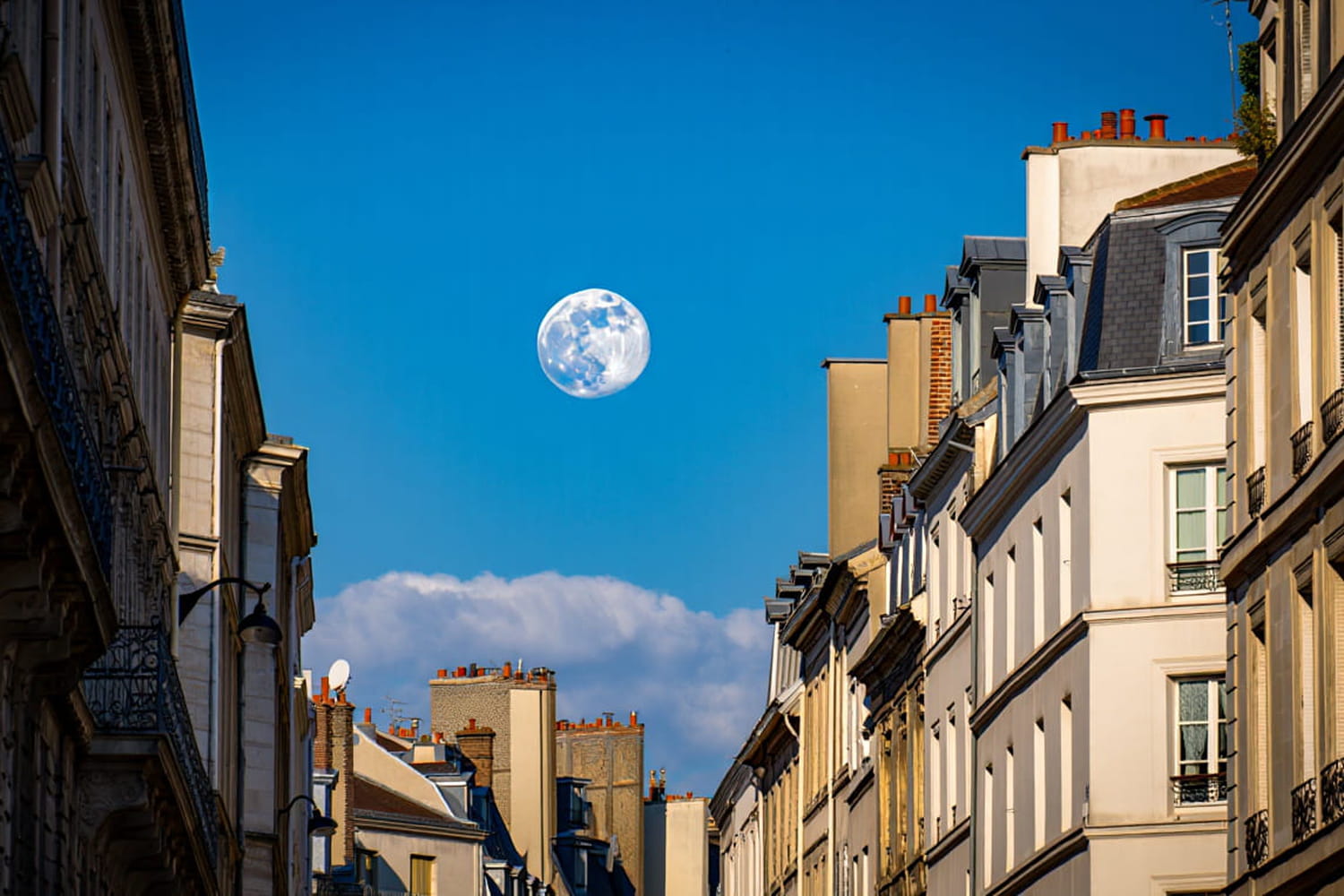We can observe the bright disk of the Moon floating in the blue sky.
An astronomical event of exceptional visual magnitude is about to light up our sky. Known by the evocative nickname “Beaver Moon”, this Full Moon is the closest Super Moon to Earth in all of 2025. Such proximity guarantees a colossal lunar disk and a rarely equaled brilliance, offering a fascinating spectacle for observers in France. Even if the naked eye struggles to capture the increase in size (up to 7% larger than an average moon), its brilliance and luminous intensity will be maximum.
What makes this Full Moon so rare is not just its size, but the exact moment it occurs. The Moon is “full” at the precise moment when it is perfectly aligned opposite the Sun. However, this maximum fullness does not always fall in the middle of the night for observers in France. What is exceptional here is the triple coincidence: the Moon is full, it is closest to the Earth (Super Moon), and this moment of perfection occurs in broad daylight for us. It is this unique combination of timing and proximity that makes it the most important astronomical time of the year. This is a particularly rare calendar coincidence: the precise moment of Full Moon and perigee (maximum proximity) has not been so favorably aligned for a daytime observation in France since 1982 (43 years ago).
The next Beaver Moon will take place precisely on Wednesday, November 5, 2025. The maximum illumination of the Full Moon will occur at 2:19 p.m. Paris time, according to the IMCCE (Institute of Celestial Mechanics and Ephemeris Calculation). At this point, the Moon will actually be visible high in the daytime sky. You will see it as a very clear white disk in the blue sky.
Its shine will be strong enough for it to be easily distinguished despite the ambient light of the day. However, the best time to appreciate this Super Moon will be at sunset, on the evening of November 5, when the Moon rises in the East, or at sunrise, on the morning of November 6, when it will appear colossal as it skims the horizon.
Beyond the visual aspect, the Super Beaver Moon raises the usual questions about its impact. Named by the Native Americans to mark the time of beaver hunting before the arrival of the cold weather, this Moon carries a strong mythological heritage. As for the impacts on sleep or mood, scientific studies remain divided. Whatever the case, this celestial meeting, marking the start of the season of great observation nights, remains a major event for all astronomy enthusiasts.


